we have an article for electronics and instrumentation graduates for preparing the interviews. Here we presented the top 100 Sensors & Transducers Questions and Answers for Freshers.
Sensors & Transducers Questions and Answers
1) What is instrument?
It is a device for determining the value or magnitude of a quantity or variable.
2) Add 826 ± 5 to 628 ± 3.
N1 = 826 ± 5 ( = ± 0.605%)
N2 = 628 ± 3 ( = ± 0.477%)
Sum = 1,454 ± 8 (=± 0.55%)
3) Subtract 628 ± 3 from 826 ± 5.
N1 = 826 ± 5 ( = ± 0.605%) N2 = 628 ± 3 ( = ± 0.477%)
Difference = 198 ± 8 (= ± 4.04%)
4) List three sources of possible errors in instruments.
- Gross Error
- Systematic
- Random errors.
5) Define Instrumental error.
These are the errors inherent in measuring instrument because of their mechanical structure.
6) Define limiting error.
Components are guaranteed to be within a certain percentage of rated value.
Thus the manufacturer has to specify the deviations from the nominal value of a particular quantity.
7) Define probable error.
It is defined as r = ± 0.6745s where s is standard deviation.Probable error has been used in experimental work to some extent in past, but standard deviation is more convenient in statistical work.
8) Define Environmental error
These are due to conditions in the measuring device, including conditions in the area surrounding the instrument, such as the effects of changes in temperature,humidity.
9) Define arithmetic mean.
The best approximation method will be made when the number of readings would give the best result.
10) Define average deviation.
By definition, average deviation is the sum of absolute values of the value deviations divided by the number of reading.
11) Define units.
It is necessary to define a physical quantity both in kind and magnitude in order to use this information for further proceedings. The standard measure of each kind of physical quantity is named as the unit.
12) Define Standards
The physical embodiment of a unit of measurement is a standard.
For example,the fundamental unit of mass in the international system is the kilogram and defined as the mass of a cubic decimeter of water at its temperature of maximum density of 4°c.
13) Draw the functional block diagram of a measurement system.
14) Mention the purpose of the measurement.
- To understand an event or an operation.
- To monitor an event or an operation.
- To control an event or an operation.
- To collect data for future analysis
- To validate an engineer design.
15) What are the methods of measurement?
- Direct comparison method
- Indirect comparison method
16) Define ODDs
The specification of limiting error is in itself uncertain because the manufacture himself is not sure about the accuracy because of the presence of random errors.
17) Classify Standards.
- International standards
- Primary standards
- Secondary standards
- Working standards
18) Define transducer and give an example.
Transducer is a device which converts one form of energy into electrical energy.
A thermocouple converts heat energy into electrical voltage.
19) Classify transducer.
On the basis of transduction form used:
- As primary and secondary transducers
- As active and passive transducers
- As analog and digital transducers
- As transducers and inverse transducers
20) What is primary transducer?
Bourdon tube acting as a primary transducer senses the pressure and converts the pressure into displacement.
No output is given to the input of the bourdon tube. So it is called primary transducer. Mechanical device can act as a primary transducer.
21) What is secondary transducer?
The output of the Bourdon tube is given to the input of the LVDT.
There are two stages of transduction, firstly the pressure is converted into a displacement by the Bourdon tube then the displacement is converted into analog voltage by LVDT. Here LVDT is called secondary transducer. Electrical device can act as a secondary transducer.
22) What is passive transducer?
In the absence of external power, transducer cannot work and it is called a passive transducer.
Example: capacitive, inductive, resistance transducers.
23) What is active transducer?
In the absence of external power, transducer can work and it is called active transducer.
Example:
velocity, temperature, light can be transduced with the help of an active transducer.
24) What is analog transducer?
These transducers convert the input quantity into an analog output which is a continuous function of time.
Thus a strain gauge, an LVDT, a thermocouple or a thermistors may be called analog transducer, as they give an output which is a continuous function of time.
25) Give the classification of units.
- Absolute units
- Fundamental and derived units
- Electromagnetic units
- Electrostatic units
26) Define Primary fundamental and auxiliary fundamental units.
Fundamental units in mechanics are measures of length, mass and time and those are fundamental to most other physical quantities and hence they are called Primary fundamental units.
Measures of certain physical quantities in thermal, electrical and illumination fields are also represented by fundamental units and are used only where those disciplines are involved and hence called auxiliary fundamental units.
27) Define unit of mass preserved at International Bureau of weights and measures at Severes near Paris.
The unit of mass is represented by a material standard: the mass of International prototype kilogram consisting of platinum Iridium hollow cylinder.
28) Define static calibration.
It refers to a process in which all the inputs(desired,modifying,interfering) except one are kept at some constant values.
29) Define Traceability.
The ability to trace the accuracy of the standard back to its ultimate source in fundamental standards of National Institute of Science and Technology is termed “Traceability”.
30) What are random errors or residual errors?
The happenings or disturbances about which we are unaware and lumped together are called random errors or residual errors.
Since these errors remain even after the systematic errors are taken care of,they are called residual errors.
Also Read : PLC Questions & Answers
31) Give one property of piezo-electric crystal.
When a force is applied to piezo-electric crystals, they produce an output voltage.
32) Define an Inverse transducer. Give an example.
A device which converts an electrical quantity into a non-electrical quantity.
A piezo-electric crystal acts as an inverse transducer because when a voltage is applied across its surfaces, it changes its dimensions causing a mechanical displacement.
33) List the factors responsible in selection of a transducer.
- Operating principle
- Sensitivity
- Operating range.
- Accuracy.
34) Define static characteristics.
Static characteristics of a measurement system are, in general, those that must be considered when the system or instrument is used to measure a condition not varying with time.
35) Mention different types of static characteristics.
- Accuracy
- Sensitivity
- Reproducibility
- Drift
- Static error and
- Dead zone.
36) What are dynamic characteristics?
Many measurements are concerned with rapidly varying quantities and, therefore, for such cases we must examine the dynamic relations which exist between the output and the input .
This is normally done with the help of differential equations. Performance criteria based upon dynamic relations constitute the Dynamic Characteristics.
37) Mention different types dynamic characteristics?
- Zero- order transducers
- First – order transducers
- Second-order transducers
- Higher-order transducers
38) What are the test inputs of the transducer?
- Impulse input
- Step input
- Ramp input
- Parabolic input
- Sinusoidal input
39) Define zero order transducer.
The input- output relationship of a zero- order transducer is given by
Y(t) = K r(t)
Where r(t) is the input, Y(t) is the output and K is the static sensitivity of the transducer.
Example for zero-order transducer is a potentiometer.
40) What is mathematical model?
Mathematical model is defined as the mathematical representation of the system and its process.
41) What is frequency response of ZOT?
Frequency response is thus defined as the steady – state output of a transducer when it is excited with sinusoidal input.
The frequency response is represented with the help of two plots namely amplitude radio verses frequency and phase angle shift versus frequency.
42) What is damping ratio?
The damping ratio V is an important parameter which decides the nature of oscillation in the transducer output.
WhenV =0, the second order system is said to be undamped and the system behaves like an oscillator. WhenV =1, the second order system is said to be critical damped and when V >1 , the second – order system is said to be over damped.
43) Define static sensitivity
Sensitivity should be taken depending on the operating point. The sensitivity is expressed in
S = output unit/ input unit.
44) Define linearity.
Linearity is a measure of the maximum deviation of the plotted transducer response from a specified straight line.
45) Compare accuracy and precision.
Accuracy is the closeness to true value whereas precision is the closeness amongst the readings.
Precision is the degree of closeness with which a given value may be repeatedly measured.
46) What is Threshold?
When the input to a transducer is increased from zero, there is a minimum value below which no output can be detected .
This minimum value of the input is defined as the threshold of the transducer.
47) Define resolution.
When the input to a transducer is increased slowly from some non-zero arbitrary value, the change in output is not detected at all until a certain input increment is exceeded. This increment is defined as the resolution.
48) Define hysteresis.
When the input to a transducer which is initially at rest is increased from zero to full-scale and then decreased back to zero, there may be two output values for the same input.
Hysteresis effects can be minimized by taking readings corresponding to ascending and descending values of the input and then taking their arithmetic average.
49) What is range and span?
The range of the transducer is specified as from the lower value of input to higher value of input.
The span of the transducer is specified as the difference between the higher and lower limits of recommended input values.
50) What is rise time?
It is defined as time required for the system to rise from 0 to 100 per cent of its final value.
51) A thermometer has a time constant of 3.5 s. it is quickly taken from a temperature degree celsius to a water bath having temperature 100degree celsius. What temperature will be indicated after 1.5 s?
q = qo [ 1- exp(1-t/t)]
=100[ 1- exp(1-1.5 /3.5)] = 34.86°c.
52) A temperature-sensitive transducer is subjected to a sudden temperature change. It takes 10 s for the transducer to reach equilibrium condition (5 times constant). How long will it take for the transducer to read half of the temperature difference?
Time to reach equilibrium conditions = 5t = 10s.
Time constant t= 10/5 =2s.
q = qo [ 1- exp(1-t/t)]
0.5= 1-[exp(-t / 2)]
t= 1.39s.
53) What is potentiometer?
Basically a resistance potentiometer, or simply a POT, (a resistive potentiometer used for the purposes of voltage division is called a POT) consists of a resistive element provided with a sliding contact.
The POT is a passive transducer.
54) What are the advantages and disadvantages of potentiometer?
Advantages of Potentiometer :
- Inexpensive
- Useful for measurement of large amplitudes
- Efficiency is very high
- Frequency response of wire wound potentiometers is limited
Disadvantages of Potentiometer :
- Require a large force to move
55) What is gauge factor?
The gauge factor is unit resistance change per unit strain, which is due to three factors as revealed by the above equation.
56) What are the different types of strain gauge?
- Unbounded metal strain gauges
- Bonded metal wire strain gauges
- Bonded metal foil strain gauges
- Vacuum deposited thin metal film strain gauges
- Sputter deposited thin metal strain gauges
- Bonded semiconductor strain gauges
- Diffused metal strain gauges.
57) What are the factors to be considered for bonded strain gauge?
- Filament construction
- Material of the filament wire
- Base carrier material or backing material
- Cement used to bond the filament to the carrier
- Lead wire connections.
58) What is strain?
It is a ratio of changing length to original length.
59) What is young’s modulus?
It is a ratio of stress and strain, dR/R / dl/l
60) What are resistance thermometers?
A resistance thermometer consists of a resistive element which is exposed to the temperature to be measured.
If the conductors or metals are used to measure the temperature, they are known as resistance thermometers and if semiconductors are used then they are known as thermistors.
Also Read : Control Systems Questions & Answers
61) What are the different approximation methods of resistance thermometer?
- Linear approximation:
- Quadratic approximation
62) What is self-heating error of thermometer?
Resistance thermometer bridges may be excited with either d.c.or a.c .The direct or rms alternating current through the thermometer is usually in the range of 2 to 20 mA.
This current causes an I2R heating which raises the temperature of the thermometer above its surrounding, causing the so called self-heating error.
63) What are the advantages and disadvantages of resistance thermometers (RTD) ?
Advantages of RTD :
- They are suitable for measuring large temperature differences and high temperatures.
- They are very accurate which makes them suitable for small temperature measurement.
- Well-designed resistance thermometers have excellent stability
- Unlike thermocouples, they do not need a reference junction and this favors them in many aerospace and industrial applications.
Disadvantages of RTD :
- Their relatively large volume compared to thermocouples results in monitoring an average temperature over the length of the resistor rather than a point temperature.
- They need auxiliary apparatus and power supply.
- The resistance element is usually more expensive than a thermocouple.
- There are errors due to self-heating and thermoelectric effect of theresistive element and connecting leads (dissimilar metal junctions).
64) What is the principle of hot wire anemometer?
Othername of resistance variation type transducers is hot wire anemometer. In general anemometers are devices used for measurement of velocity of flow.
65) Why dynamic compensation is required for hot wire anemometer?
It is used avoid the fluctuation, we need dynamic compensation circuits for the hotwire anemometer.
66) What are the applications of thermistors?
- Measurement of power at high frequencies
- Measurement of thermal conductivity
- Measurement of level, flow and pressure of liquids
- Measurement of composition of gases
- Vacuum measurements
- Providing time delay.
67) Mention the features of thermistors.
- Compact, rugged and inexpensive
- Good stability
- The response time of thermistors can vary from a fraction of a second to minute
- Self-heating of thermistors is avoided
- Thermistors can be installed at a distance from their associated measuring circuit
68) Mention the materials used for thermistors.
Mixture of metallic oxides such as manganese, nickel, cobalt, copper, iron and uranium.
69) Mention the applications of strain gauge.
- Used to measure pressure
- Used to measure torque
- Used to measure acceleration
- Used to measure force
70) What is inductance transducer?
Transducers based on the variation of inductance are another group of importance devices used in much application.
In these transducers self-inductance or the mutual of a couple of coils is changed when the quantity to be measured is varied.
71) Mention three principles of inductance transducer.
- Change of self-inductance
- Change of mutual inductance
- Production of eddy currents.
72) What is LVDT?
The Linear Variable Differential Transformer (LVDT) is the most common mutual inductance element.
This can be considered to be a versatile transducer element for most of the electromechanical measuring systems with regards to resolution, hysteresis, dynamic response, temperature characteristics, linearity and life.
73) What are the advantages and disadvantages of LVDT?
Advantages of LVDT :
- High range
- Friction and electrical Isolation
- Immunity from external effects
- High input and high sensitivity
- Ruggedness
- Low hysteresis
- Low power consumption
Disadvantages of LVDT :
- Relatively large displacements are required for appreciable differential output
- They are sensitive to stray magnetic fields but shielding is possible
- Many a times, the transducer performance is affected by vibrations
- The receiving instrument must be selected to operate on a.c
- The dynamic response is limited
- Temperature affects the performance of the transducer.
74) What are the applications of LVDT?
- Displacement measurement and LVDT Gage heads
- LVDT pneumatic servo follower
- LVDT Load cells
- LVDT Pressure Transducer
75) What is null voltage?
Ideally the output voltage at the null position should be equal to zero. However, in actual practice there exists a small voltage at the null position.
76) Explain the principle of Induction Potentiometer?
The primary is excited with alternating current. This induces a voltage in to the secondary.
The amplitude of this output voltage varies with the mutual inductance between the two coils and this varies with the angle of rotation.
77) Explain the principle of Variable Reluctance Accelerometer?
Another common version of the variable reluctance principle.
This is an accelerometer for measurement of accelerometer for measurement of acceleration in the range ± 4g. Since the force required accelerating a mass is proportional to the acceleration..
78) What is the need of demodulator in Variable Reluctance Accelerometer?
To detect motion on both sides of zero, a fairly involved phase- sensitive demodulator would be required.
To eliminate the demodulator the iron core and springs were adjusted so that core was offset to one side by an amount equal to the spring deflection corresponding to 4 g acceleration.
79) What is the principle of capacitive transducer?
Many industrial variables like displacement, pressure, level, moisture, thickness etc. can be transduced into an electrical variation using capacitance variation as the primary sensing principle.
80) What are the desirable features of capacitive transducer?
- Its force requirements are very small
- As the moving plates have very little mass, design of transducer with fast response characteristics is possible
- There is no physical between moving and stationary parts
- Does not depends the conductivity of the metal electrode
- Shielded against the effect of external electric stray fields.
81) What are the different practical capacitance pickups?
- Equibar differential pressure transducer
- Feedback type capacitance proximity pickup
- Condenser microphone.
82) What is Microphone?
It is also a transducer which converts sound energy into electrical energy.
Example is condenser microphone.
83) What is the principle of change of capacitance?
- Change in overlapping area A
- Change in the distance between the plates d
- Change in dielectric constant.
84) What are the advantages of capacitive transducers?
- They require only small force to operate
- Have a good frequency response
- Extremely sensitive
- High input impedance
85) What are the disadvantages of capacitive transducers?
- The metallic parts of the capacitive transducers must be insulated from each other
- Non-linear behavior
- This leads loading effects
- The cable may be source of loading resulting loss of sensitivity.
86) What are the uses of capacitive transducer?
- Can be used for measurement of linear and angular displacement
- Can be used for measurement of force and pressure
- It can be used as pressure transducer
- Measurement of humidity in gases
- Commonly used for measurement of level, density, weight.
87) What is the value of capacitance for measurement of level of a non-conducting liquid?
C= 2pe0 [e1 h1 + e2 h2 / loge (r2/r1) ]
Where, h1= height of liquid
h2= height of cylinder
e1=relative permittivity of liquid
e2= relative permittivity of vapour above liquid r2= inside radius of outer cylinder
r1= outer radius of inner cylinder
e0= relative permittivity of free space
88) What is analog transducer?
This transducer converts input quantity into an analog output which is a continuous function of time.
Thus a strain gauge, LVDT, thermocouple, thermistors, may be called as analog transducer.
89) What is digital transducer?
These transducer convert input quantity into an electrical output which is in the form of pulses.
90) What is piezo electric transducer?
They convert pressure or force into electrical charge.
These transducers are based upon the natural phenomenon of certain non-metal and di-electric components.
91) What are the suitable materials for piezo electric transducer?
Primary quartz, Rochelle salt, ammonium di-hydrogen phosphate (ADP), and ceramics with barium titanate, di-potassium tartrate, potassium di-hydrogen phosphate and lithium sulfate.
92) What is‘d’coefficient?
Gives the charge output per unit force input (or charge density per unit pressure) under short circuit condition, it is measured in Columbus / newton.
93) What is ‘g’ coefficient?
G-coefficient representing the generated e.m.f gradient per unit pressure input.
94) What is ‘h’ coefficient?
It is obtained by multiplying the g-coefficient by young’s modulus valid for the appropriate crystal orientation of the material, and thus measures the e.m.f gradient per unit mechanical deformation, or (V/m) / (m/m ).
95) What are the suitable materials for magneto-strictive transducer?
Iron , nickel, 68 permalloy and ferroxcube ect .
96) What is magneto-strictive transducer?
The permeability can increase or decrease depending upon the material, type of stress , and the magnetic flux density in the sample.
97) What are the different magneto-strictive transducer?
- Magneto-strictive load cell
- Magnetostrictive Accelerometer
- Magnetostrictive Phonographic Pickup
- Magnetostrictive Torque Transducer
98) What are the errors in Magnetostrictive transducer?
- Hysteresis
- Temperature
- Eddy current
- Input impedance
99) What are the special features of magneto-strictive transducer?
- To measure large force
- measure several thousand “g”
- Characteristics depend upon temperature.
100) What is fiber optic transducer?
Fiber optic cable consists of outer core and inner cladding.
Data is transmitted in the form of light.It is used for measuring displacement,torsion.
101) Compare digital transducer with analog.
Digital transducer gives digital outputs. Analog transducers outputs are continuous functions of time.
If these analog transducers are to be interfaced with digital devices, then one has to use analog to digital converters.
102) How will u achieve high resolution in digital transducer?
The number of tracks must be increased and the length of each coded should be reduced, which would require fine brushes.
103) What are the different digital transducer are available?
- digital displacement transducer
- shaft angle encoder
- optical encoder
- magnetic encoder
104) what is piezo electric effect?
A piezo electric material is one in which an electric potential appears across certain surfaces of a crystal if the dimensions of the crystal are changed by the application of the mechanical force.
105) What is digitizer?
Digital encoding transducer or digitizer enables a linear or rotary displacement to be directly converted into digital form without intermediate form of analog to digital (A/D) conversion.
106) What are the classifications of encoder?
- Tachometer transducer
- Incremental transducer
- Absolute transducer
107) What are the input characteristics of the transducer?
- Type of input and operating range
- Loading effect
108) What is zero error of the transducer?
In this case output deviates from the correct value by a constant factor over the entire range of transducer.
109) What are the different transfer characteristics of the transducer?
- Transfer function
- Error
- Scale error
- Zero error
- Sensitivity error
- Non- conformity
- Hysteresis
3. Transducer response
Also Read : HR Questions & Answers



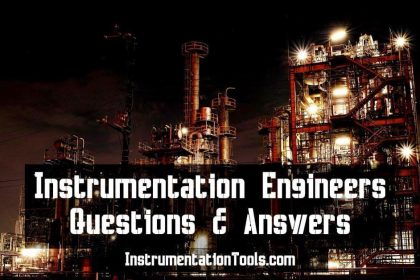
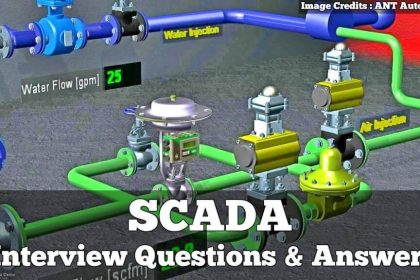
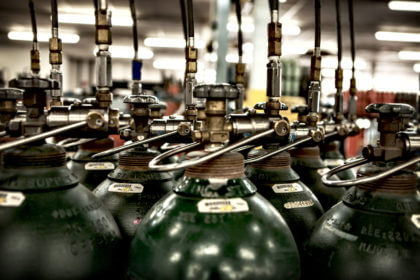
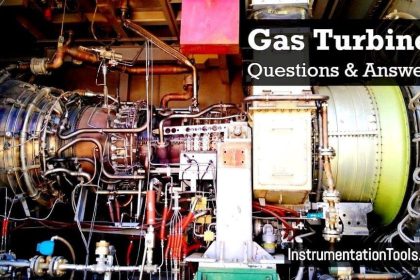



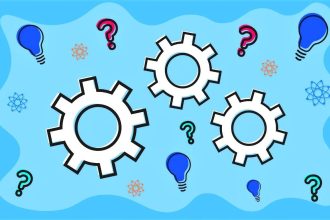
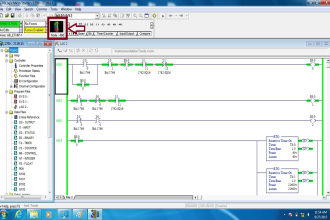
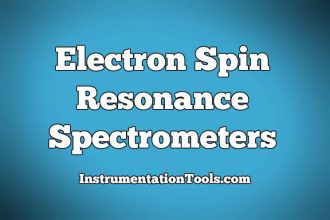
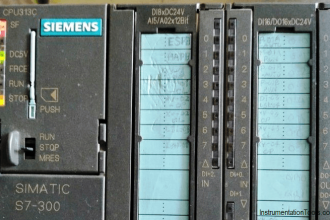
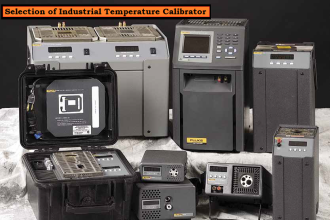

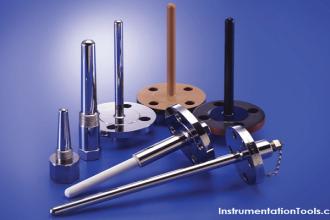
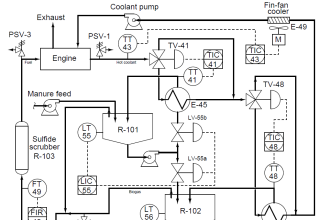

Thank u very much , keep it up